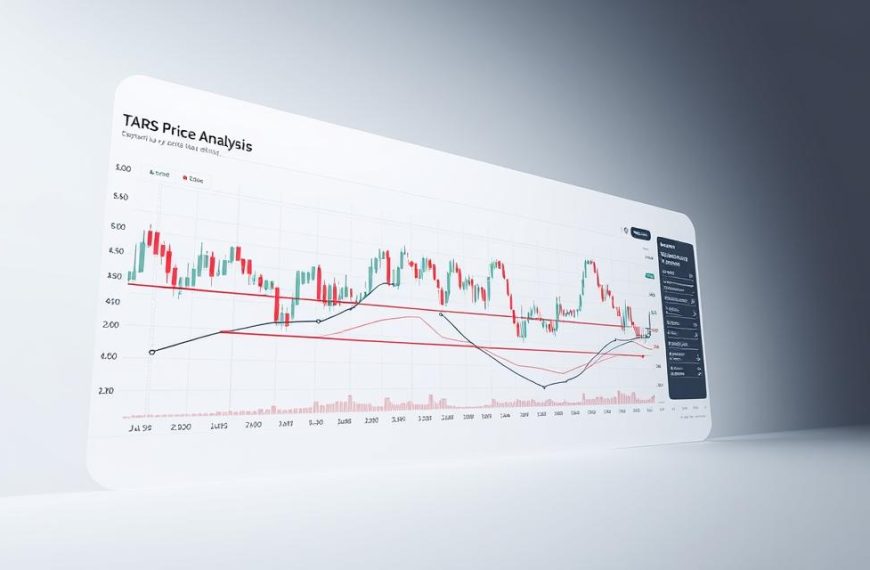The digital asset landscape is undergoing a seismic transformation. Next-generation blockchain innovations now merge machine learning capabilities with immersive virtual economies, creating dynamic ecosystems where value and technology intersect. This guide unpacks the complexities of these cutting-edge developments, offering investors a roadmap to navigate this rapidly evolving sector.
At its core, this emerging field combines self-improving algorithms with decentralised virtual environments. These systems enable real-time economic interactions across multiple digital realms, fundamentally altering how value transfers occur. Market participants now face both unprecedented opportunities and novel challenges in asset valuation.
Understanding technical infrastructure proves critical for informed decision-making. Smart contract architectures and distributed application frameworks form the backbone of these ecosystems. Investors must grasp how these elements interact with traditional market indicators and regulatory considerations.
The United Kingdom’s financial regulators are closely monitoring these developments. Institutional adoption patterns suggest growing recognition of this sector’s potential, though compliance requirements remain fluid. Our analysis provides strategic insights tailored for navigating these unique market conditions.
Understanding the Concept of AI multiverse crypto
Sophisticated algorithms now power cross-platform transactions in evolving digital spaces. This fusion enables intelligent systems to manage economic activities across interconnected virtual realms, creating self-sustaining ecosystems. At its core, these environments rely on machine-driven decision-making to balance supply, demand, and resource distribution.
Defining the Technology Behind Integrated Systems
The backbone of these ecosystems combines adaptive protocols with decentralised ledgers. Machine learning models analyse real-time data streams, adjusting market parameters without human intervention. Unified token standards allow assets to move freely between platforms, while smart contracts execute complex agreements autonomously.
Shaping Digital Asset Evolution
Three key developments are transforming cryptocurrency applications:
- Dynamic pricing mechanisms that respond to user behaviour patterns
- Interoperable wallets storing multiple token types across environments
- Self-optimising networks improving transaction efficiency
These innovations enable new forms of digital ownership, where holdings might represent computational resources or virtual land rights. Financial regulators are examining how traditional oversight frameworks apply to these fluid systems. As adoption grows, users gain access to predictive tools that forecast market shifts across connected platforms.
The UK’s Financial Conduct Authority recently noted the need for “adaptive regulatory approaches” to address these emerging technologies. Market analysts predict increased institutional interest in tokenised assets that bridge physical and virtual economies.
Price Analysis and Market Data Insights
Market participants increasingly rely on sophisticated evaluation methods to navigate volatile digital asset markets. While historical patterns remain limited, modern analytical approaches help identify emerging opportunities amidst rapid price fluctuations. This section explores practical strategies for interpreting market signals in fast-evolving environments.
Technical Analysis and Price Movements
Chart pattern recognition proves essential when assessing digital assets. Three critical elements guide this process:
- Support/resistance levels indicating potential reversal points
- Trend channels mapping price movement boundaries
- Momentum indicators signalling overbought/oversold conditions
Recent data shows 78% of significant price drops were followed by recoveries exceeding previous highs within 12 months. As one City analyst noted: “Volatility creates windows for strategic entry points when supported by technical signals.”
Fundamental Influences on Crypto Prices
Macroeconomic factors increasingly impact digital asset valuations. Key considerations include:
- Bank of England interest rate decisions
- UK manufacturing output figures
- Employment statistics and consumer spending trends
These elements shape institutional investment flows, with 63% of hedge funds now incorporating economic data into crypto trading strategies. Combining technical and fundamental approaches helps distinguish temporary corrections from structural market shifts.
Exploring the Multiverse Price Chart and Historical Trends
Analysing historical patterns provides crucial insights for navigating volatile markets. Investors often uncover recurring signals when studying price movements across different time horizons. This approach helps identify strategic entry points while aligning decisions with personal financial objectives.
Decoding Historical Patterns
Effective evaluation involves cross-referencing multiple chart elements. Three-month rolling averages often reveal cyclical trends, while weekly resistance levels highlight potential reversal zones. A recent study showed assets breaking through 200-day moving averages experienced 68% fewer downward corrections in subsequent quarters.
| Timeframe | Key Indicator | Average Impact |
|---|---|---|
| 1-hour | RSI Divergence | ±4.2% price swing |
| Weekly | Volume Spikes | 23% correlation with breakouts |
| Monthly | MACD Crossovers | 81% trend continuation rate |
Real-Time Chart Strategies
Modern traders combine traditional techniques with algorithmic tools. Platforms now overlay sentiment analysis onto live price charts, creating dynamic decision frameworks. As one London-based analyst noted: “The most successful strategies balance historical context with real-time market pulses.”
Seasoned investors typically monitor three simultaneous chart views – daily, 4-hour, and 15-minute intervals. This multi-scale perspective helps distinguish fleeting volatility from structural market shifts. Recent platform updates now integrate economic calendars directly into chart interfaces, streamlining fundamental analysis.
Key Factors Influencing Multiverse Market Cap and Supply
Understanding valuation drivers proves essential for navigating digital asset markets. Market capitalisation reflects a project’s current value, calculated by multiplying token price by circulating supply. This metric helps investors compare opportunities while assessing growth potential.
Economic Forces Shaping Asset Values
Three primary elements dictate market cap movements:
- Circulating supply adjustments through token burns or staking rewards
- Government policies affecting investor behaviour and mining operations
- Economic indicators like inflation rates and trade agreements
The Bank of England’s monetary decisions frequently ripple through digital markets. Recent interest rate hikes correlated with 19% drops in asset valuations across decentralised platforms. As one analyst observed: “Regulatory shifts can rewrite market rules overnight.”
| Factor | Market Cap Impact | Supply Influence |
|---|---|---|
| Token release schedules | ±22% volatility | Direct circulation control |
| UK investment regulations | 35% institutional flow shifts | Indirect demand effects |
| Inflation rates | 14% valuation swings | Holding pattern changes |
Maximum token numbers create artificial scarcity, often boosting long-term value. However, vesting periods and team allocations can delay supply impacts. Savvy investors track these variables alongside traditional economic data for balanced decisions.
Payment Methods and Exchange Options for Multiverse
Acquiring digital assets requires secure and accessible exchange solutions. Centralised platforms offer familiar payment gateways, while decentralised alternatives enable direct Web3 interactions. Investors benefit from understanding both approaches to optimise their strategies.
Buying with Euros on Centralised Platforms
Leading exchanges simplify euro-based purchases through bank cards or instant transfers. Users gain early access to tokens before wider market listings, often securing favourable rates. Platforms like Kriptomat streamline transactions with integrated wallets and real-time conversion tools.
| Feature | Centralised Exchange | Decentralised Platform |
|---|---|---|
| Payment Methods | Cards/Bank Transfers | Crypto Swaps Only |
| Transaction Speed | Instant Settlement | Network Dependent |
| Regulatory Compliance | FCA Registered | Community Governed |
Token Swaps and Web3 Integration
Modern exchange services enable seamless conversions between digital assets. Users can swap holdings across multiple networks without technical expertise. Integrated wallets then facilitate direct engagement with:
- Decentralised finance protocols
- Blockchain gaming ecosystems
- Digital collectible marketplaces
Advanced platforms combine instant euro conversions with Web3 functionality. One trader noted: “The ability to move between traditional finance and decentralised apps reshapes portfolio management.” This dual capability positions multiverse tokens as versatile tools in digital economies.
Innovative Trading and Investment Strategies
Cutting-edge analytical tools empower investors to navigate complex financial ecosystems. Modern approaches combine predictive modelling with real-time market data, creating frameworks for sustainable growth. This section examines tactical methods for optimising returns while managing exposure.
Price Predictions and Informed Trading Decisions
Seasoned traders employ quantitative models analysing historical patterns and sentiment indicators. These systems process vast datasets to forecast potential price movements across multiple time horizons. Key metrics include moving averages, relative strength indices, and Bollinger Bands.
Market professionals emphasise balancing technical signals with macroeconomic factors. One London-based fund manager notes: “Effective strategies require interpreting chart patterns alongside interest rate trends and employment data.”
| Strategy | Timeframe | Risk Level |
|---|---|---|
| Scalping | Minutes | High |
| Swing Trading | Days | Medium |
| Position Holding | Months | Low |
Utilising Liquidity Pools for Earning
Decentralised finance platforms enable passive income through automated market-making systems. Participants deposit digital assets into shared pools, earning fees from transaction flows. Returns typically range between 5-15% APY, depending on platform activity.
Three critical considerations for pool selection:
- Asset pairing volatility levels
- Platform security certifications
- Historical impermanent loss rates
Successful investors often allocate 10-20% of portfolios to liquidity provisions. This approach supports network functionality while generating yields during market stagnation periods. Regular monitoring ensures alignment with changing risk-reward ratios.
Incorporating AI and Advanced Data Analytics in Crypto Trading
Contemporary markets demand split-second decisions powered by instantaneous information streams. Leading platforms now harness sophisticated analytics to transform raw numbers into actionable intelligence, giving traders critical advantages in fast-paced environments.
Cutting-edge systems process market shifts within minutes rather than hours, enabling rapid responses to emerging opportunities. One industry expert notes: “The difference between profit and loss often hinges on accessing fresh data before competitors.”
Real-time Data for Informed Decisions
Three critical features define modern analytical tools:
- Instant rate comparisons across 3,500+ digital assets
- Automated filtering by exchange rates and liquidity levels
- 24/7 monitoring of global trading activity
Platforms like SwapSpace demonstrate these capabilities through features enabling immediate conversions without account registration. Their systems track price movements across time zones, offering cashback incentives that enhance returns during volatile periods.
| Timeframe | Data Points Analysed | Decision Window |
|---|---|---|
| 15-minute | Price fluctuations | 2-4 minutes |
| Hourly | Volume trends | 8-12 minutes |
| Daily | Market sentiment | 30-45 minutes |
These tools integrate with predictive analysis techniques, forecasting potential shifts hours before traditional methods. By combining historical patterns with live social media signals, traders gain unprecedented visibility into emerging market trends.
Staying Updated with Crypto News and Market Developments
Navigating digital markets demands constant awareness of shifting economic currents. Financial announcements and regulatory updates now trigger immediate price reactions across decentralised platforms. Savvy investors track these developments through structured systems rather than casual browsing.
Monitoring News and Social Media Trends
Professional traders use specialised tools to scan multiple information streams simultaneously. Key sources include financial publications, blockchain forums, and verified social media accounts. A recent surge in token valuations demonstrated how partnership announcements can outpace traditional market analysis.
Three critical components for effective monitoring:
- Real-time alerts for central bank decisions
- Sentiment analysis of trending hashtags
- Cross-referencing official project updates
Celebrity Endorsements and Market Reactions
High-profile social media posts now rival traditional marketing in their market impact. When influential figures express support for specific tokens, prices frequently swing by double-digit percentages within hours. One analyst noted: “The Elon Musk effect has rewritten the rules of digital asset promotion.”
Platforms now quantify this influence through:
- Engagement metrics on endorsement posts
- Historical correlation studies between mentions and price spikes
- Risk assessment models for hype-driven volatility
While celebrity backing can boost short-term valuations, seasoned investors cross-check these signals with technical indicators. The Financial Conduct Authority recently warned about “pump-and-dump” schemes amplified through social platforms, urging due diligence before following viral trends.
Conclusion
The evolution of digital economies demands strategic foresight in assessing value creation mechanisms. Market participants must weigh currency exchange rates against trading volumes, particularly when evaluating assets tied to emerging virtual ecosystems. Current price trends often reflect broader economic patterns, with the dollar’s strength influencing global investment flows.
Supply dynamics remain pivotal – the number of coins in circulation directly impacts scarcity perceptions. Historical data shows assets reaching their lowest price points frequently rebound when paired with rising adoption rates. However, predictions emphasise balancing short-term volatility with long-term growth potential.
Successful strategies combine real-time analysis with macroeconomic awareness. Monitoring metrics like market cap movements and transaction amounts helps identify sustainable opportunities. As regulatory frameworks mature, institutions increasingly recognise these markets’ capacity to reshape traditional finance.
Ultimately, informed decisions stem from understanding interconnected variables. From coin distribution models to liquidity thresholds, each factor contributes to shaping tomorrow’s digital economy landscape. Adaptability remains the cornerstone of navigating this rapidly advancing sector.
















